Another day in Hanoi. Leon managed to wake up on time and once again found Malte in the living room on the sofa. He had problems falling asleep again. Since Leon suspected this, he let him sleep until the last moment at 8:35 AM, because at 9:00 AM we were supposed to have our tour. We managed a turbo start to the morning, hopped back on the moped into the traffic chaos, and arrived punctually at the agreed meeting point.
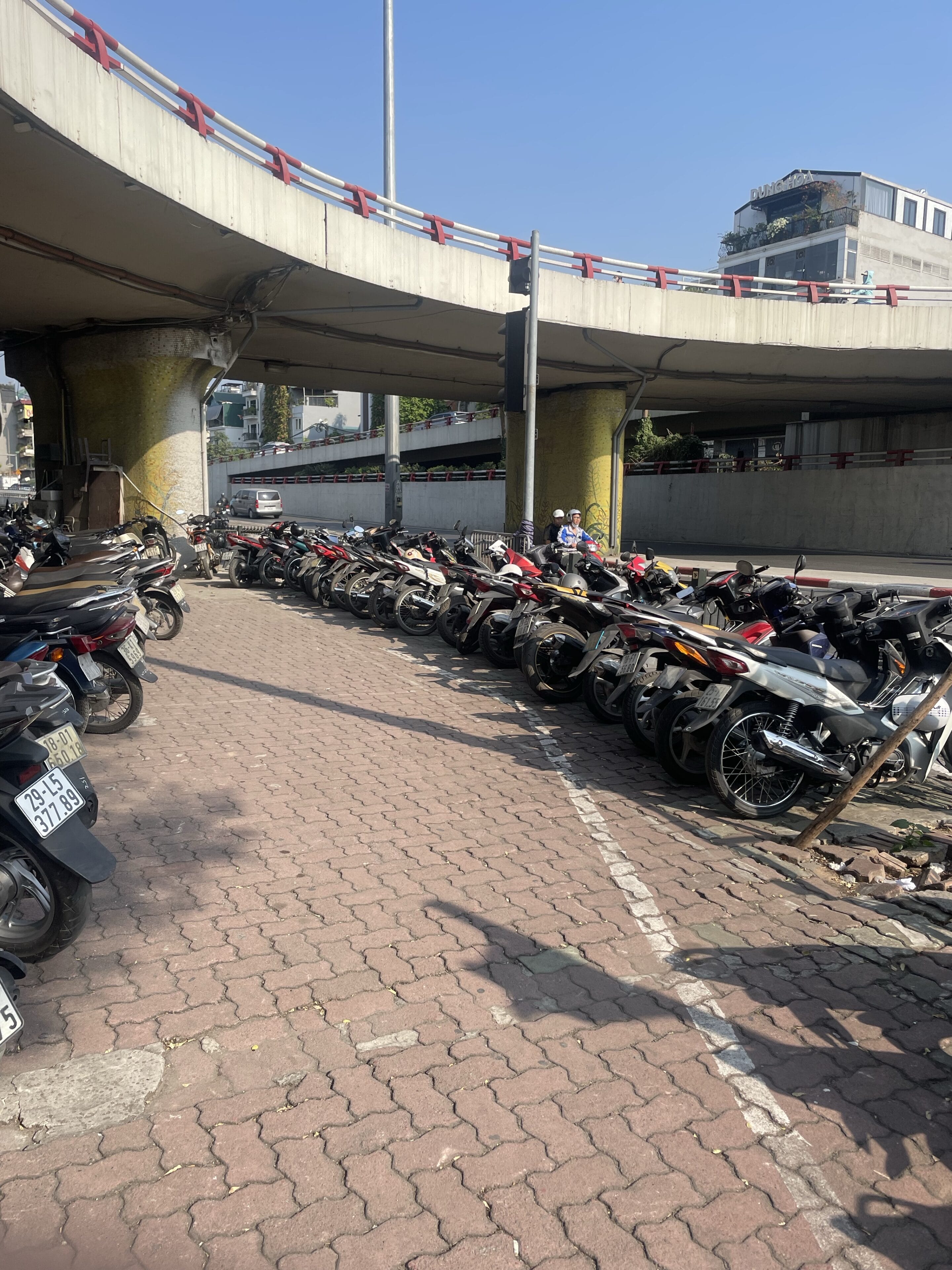
Lynn, or Minh – the young woman who was to accompany us through the city for the next few hours – also arrived on time. Growing up in a village near Hanoi, she dazzled us with her excellent knowledge of traditional Vietnamese language and food culture, but because she had lived in Hanoi for a long time, she also had a few interesting places off the typical tourist attractions in Hanoi in store. Today was mainly about those.
But first we talked about traditional Vietnamese coffee, which understandably differs across various regions. Vietnam is divided into the North, the long Center, and the South, and logically, the climate in the regions of the country, which stretches over 1650 km along the coast from North to South, varies significantly. While the climate in the North is temperate compared to the other regions and has relatively high precipitation, the long Center of Vietnam is much hotter and drier. In the South, on the other hand, it is warmer, but precipitation increases in proportion. Additionally, the North of Vietnam has relatively strong seasons. This has an impact on traditional food culture. Traditionally, different fruits were grown in the regions, and the needs of the people who had to live with the conditions also varied, which led to differences in food across regions. We returned to the topic of climate often throughout the tour.
But first, the coffee: In Northern Vietnam, Egg Coffee (Cà Phê Trứng) is a specialty. The “cooler” climate in winter makes warm and hearty foods and drinks particularly popular. However, apart from Cà Phê Trứng, the preparation of coffee is very diverse, as the seasons have produced different methods of preparation. The coffee preparation in Central Vietnam resembles, like the climate, that of the Middle East. This is where salted coffee originates, because along the coastline particularly, a lot of fish is preserved in salt, leading to a corresponding flavor adaptation. In the South, however, there are hardly any seasons. It has a tropical climate with high temperatures and high humidity. Most coffee is grown here, as it thrives best under these conditions. In the South, people traditionally drink more Cà Phê Sữa Đá, or sweet iced coffee, often enhanced with coconut milk/sorbet for maximum refreshment effect.
Throughout the entire conversation, Malte and Leon hardly thought of anything other than indulging themselves in one of these wonderful drinks, as we hadn’t managed to do that in the morning. In the end, we couldn’t help but settle in one of the oldest cafés in Hanoi (where the Cà Phê Trứng is said to have been invented) and briefly have a coffee. Minh (our guide) also ordered one, and so we could continue chatting about the cultural peculiarities of Vietnam over coffee.
Finally awake and receptive, we then headed to the pagoda on the lake in the French Quarter. A few years ago, the largest and oldest known giant turtles lived in the lake; they are now exhibited in the museum on the grounds and are considered a sign of longevity and permanence for many Vietnamese. At the pagoda, we were also explained which cultures influenced Vietnam throughout its history. The pagoda has influences from China in the form of the characters that can be seen at the entrance and throughout the pagoda. However, these characters have no meaning in Mandarin, as they describe Vietnamese words. Thus, a Chinese person can read the characters but cannot understand the language. Vietnamese people, on the other hand, can no longer read the characters but know what they mean when they are read aloud to them. Additionally, the pagoda is located in the French Quarter with strong Western influences. The French understood then that it was more capital-rich for them to preserve the downtown area of Hanoi, as the French population had something to look at due to it. On the other hand, the Vietnamese also benefited, as they could then indulge themselves in the French Quarter. This results in the constellation that Hanoi was not completely built over by the colonizers, allowing Vietnamese culture to remain more visible.
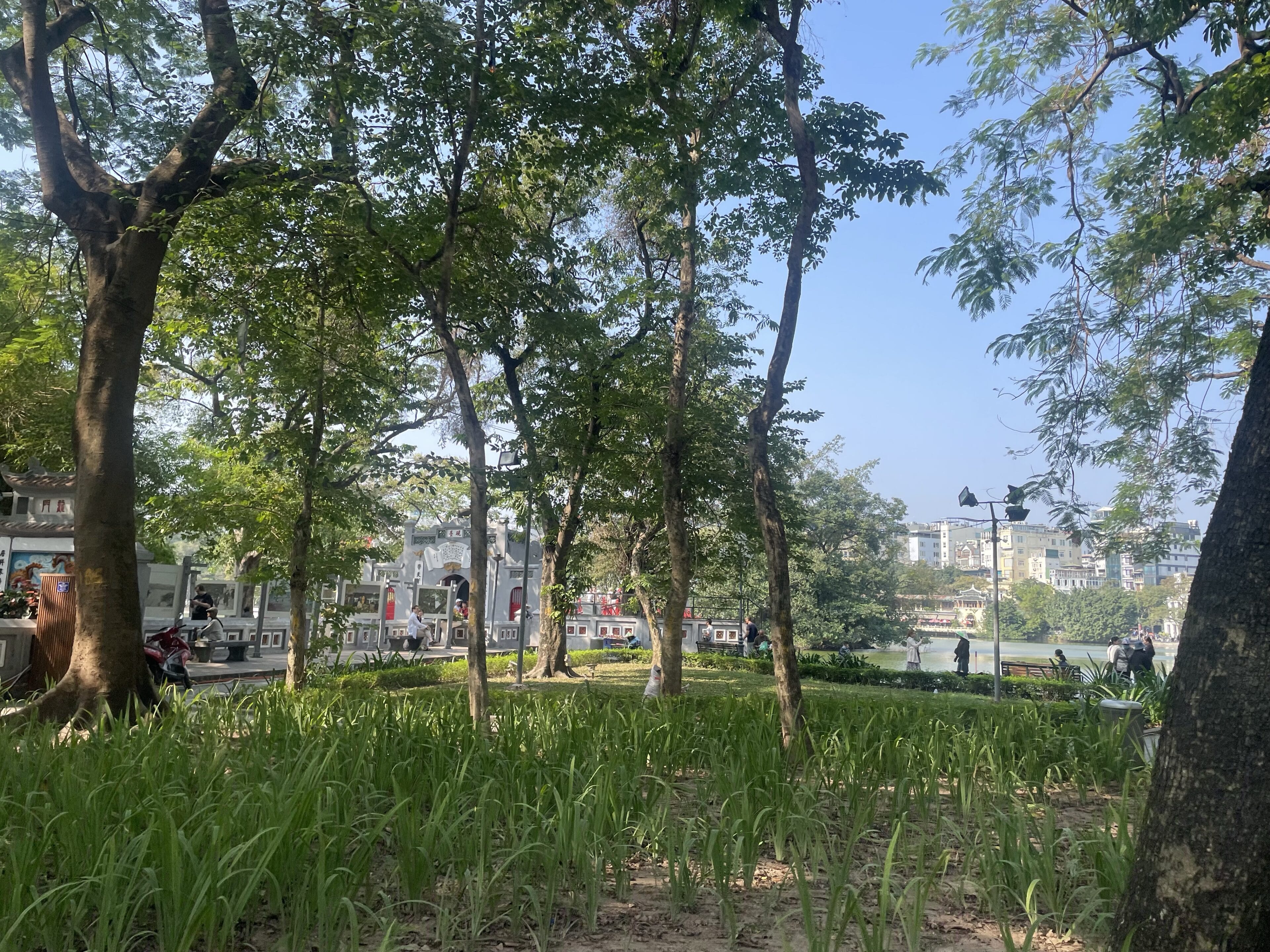
This example shows something fundamental: The Vietnamese culture has experienced influences from different sides but has never lost its own foundation.
Next, we talked about the role of women in society. Women have significant decision-making power and control household finances and major investments. This is also reflected in belief: Much is believed in mother goddesses like Mẫu Đạo, who play a significant role. Women are often responsible for the family’s future planning, including the children’s education, house construction, and the care of elderly family members. In Vietnam, women are regarded as the stability anchors of the family due to their mindset. In the past, women also contributed significantly to the family’s nutrition and thus became the providers. They represent harmony in the household and take on mediation tasks in conflicts. Because of these characteristics, shops in Vietnam are usually named after the women of the family—with the thought that a shop intending to exist long-term needs the attributes of women more than those of men.
In Vietnamese culture, stability and harmony are important values. Hence, women have traditionally held a high status.
The man is considered the public face of the family. He represents the family in social or political matters, acts as the protector of the family, and makes the short-term decisions that affect daily life. In this way, he complements the woman’s long-term planning role.
Using the image of the sun and moon, Ming explained the roles of women and men in Vietnamese society to us. In Taoism, the moon symbolically represents qualities such as calmness, passivity, receptiveness, intuition, and consistency. These qualities represent the Yin, the female principle in Taoist philosophy. Yin is considered the counterpart to Yang, the male principle, which is symbolized by the sun and encompasses characteristics such as activity, energy, and assertiveness. It is an image that talks about a meaningful division of labor, where people fully take on those tasks that align with their strengths and weaknesses and leave others for others, rather than trying to equally distribute all tasks among everyone for the sake of fairness. An approach that shows that the mindset of this society is more oriented towards functioning as a community and not as an individual. This thought can also be traced in various other situations of daily life.

This image of the sun and moon also illustrates the differences between Vietnam and China. China is more aligned with the sun. The man takes on a more dominant role there. This is also a result of the subtropical to temperate climate in China. Due to the strong seasons and geology, people in China, especially in the north, were less sedentary and more influenced by nomadism. This strengthened the man’s role, as daily decisions held more significance than long-term planning. In Vietnam, on the other hand, despite the seasons, it is possible to engage in agriculture year-round in every location. Therefore, people here settled down more quickly and thought more about the places where they settled. Since the sea contributes to the pleasant climate, the population has settled along the coast, which has brought seafood, particularly fish sauce, into Vietnamese culinary culture. Surrounded by mountains and sea, expanding powers like China found it difficult to conquer Vietnam, and the Vietnamese themselves, shaped by their culture to be sedentary and not needing to constantly expand into new regions, had little desire to expand.

As we discussed this topic, we passed older Vietnamese ladies and gentlemen who were having their pictures taken with the lake in the background. They wore traditional clothes, though the cut was adapted to those of France. Another example of integrating other cultures while not completely losing one’s own identity.

We were on our way to the oldest bookstore in Vietnam, which opened in 1974. Aside from the exciting architecture of the store, we could also see the restructuring of houses resulting from redistribution in communism. In the building that now houses the bookstore, a wealthy family once lived. After redistribution, twenty families found shelter there, some of whom still live there today. Generally, this has led to countless quirky buildings in the downtown area, especially noticeable due to the small plot sizes and their maximum height of construction.




In the library, we then talked about food culture in Vietnam. We learned that food in Vietnam is meant not only to nourish the body but also to heal it. Many dishes are traditionally prepared with this mindset. There’s an entire philosophy aimed at healthy eating. For example, meals in Vietnam are designed for slow cooking and slow eating. The food is served very hot, requiring you to wait before you can eat it. At the same time, chopsticks are used, which cannot “transport” much food at once. Food is frequently dipped into various sauces and soups before being consumed, which also slows down the eating process. Broths, in particular, are often boiled for hours, so the herbs used can better infuse their special effects into the broth. There are countless facets worthy of discussion, but it would lead us too far. It shows, however, how strongly traditional Vietnamese food differs from Europeanized Vietnamese fast food.
After the tour, we walked a bit with Minh back to the starting point until Leon spotted some fried dumplings on the roadside that he had not yet tried. There hadn’t been breakfast yet, so we said goodbye to Minh and sat down at the tables that were much too small for our understanding.
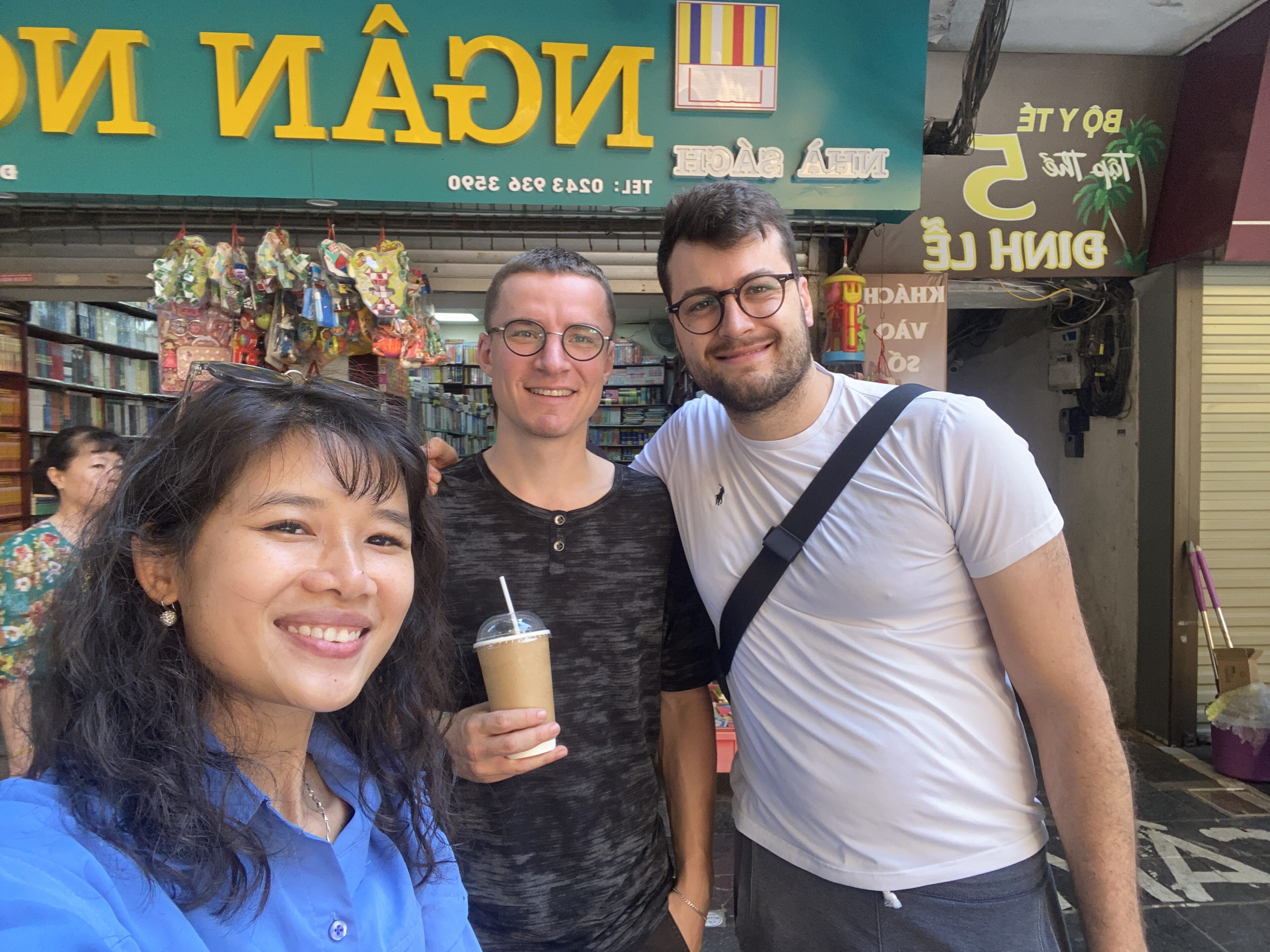
At first, we just wanted to try one but ended up ordering more and more. They were dumplings filled with glass noodles, egg, minced meat, and morels.
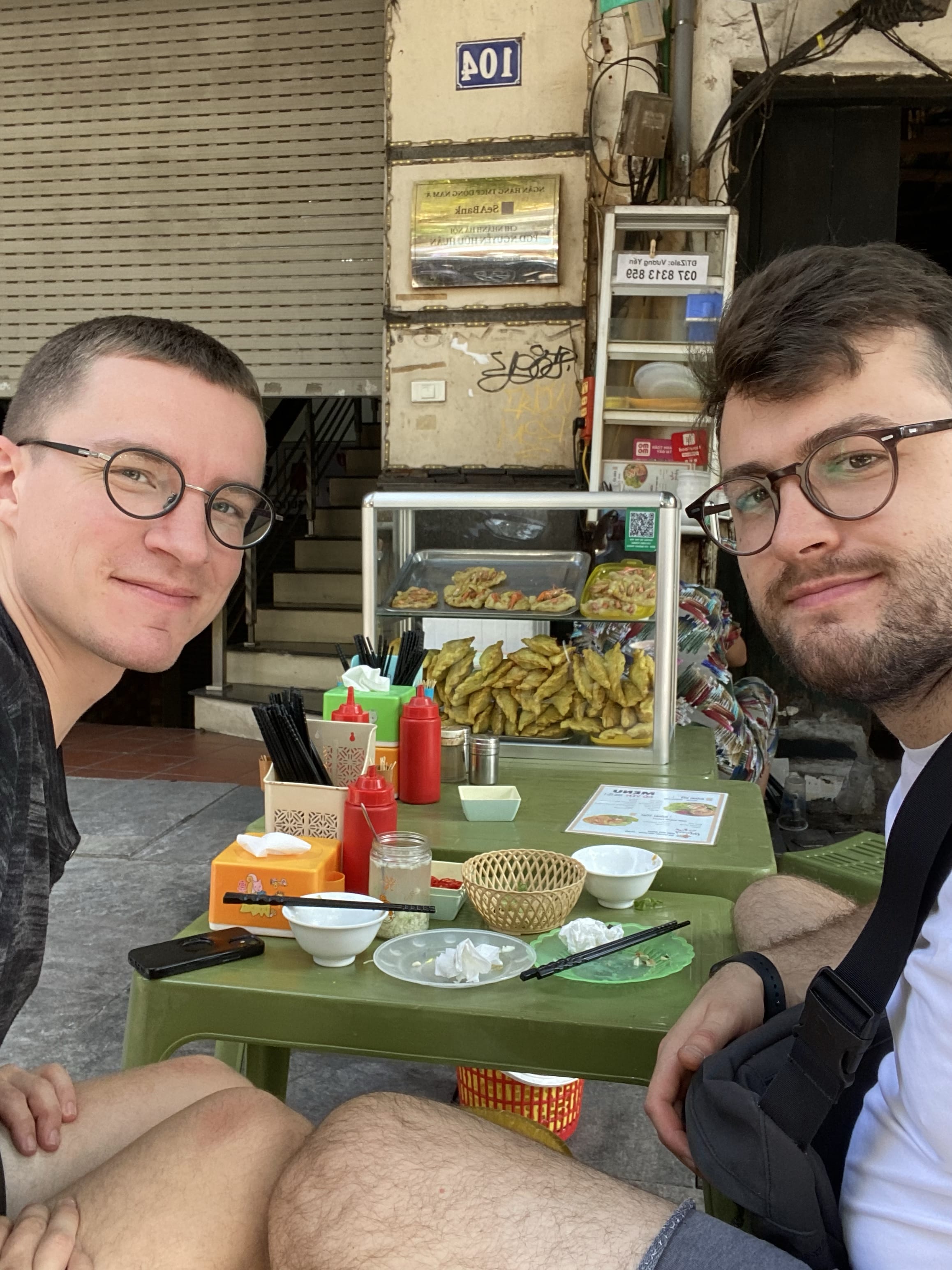
Strengthened, we wandered to Dong Xuan Market – not without treating ourselves to some fried dough balls filled with soy on the way.
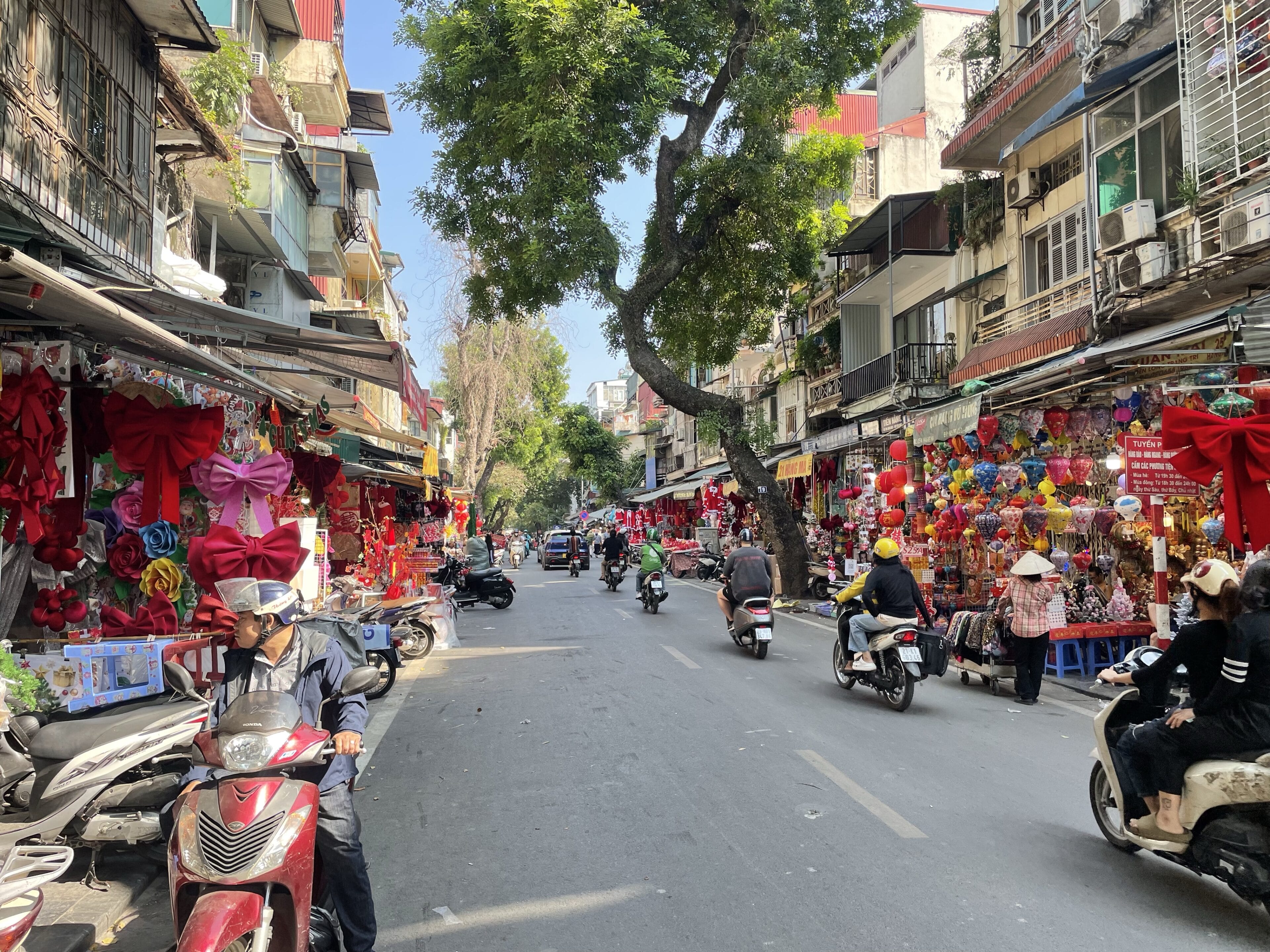

The Dong Xuan Market is a huge labyrinth where fabrics of all qualities and materials are sold. We found nothing for ourselves, so we were back out pretty quickly.

Completely overwhelmed by the day’s impressions and a bit tired from the short night, we sat for a moment in a café and drank – hard to believe but true – not coffee but lemonade and juice.
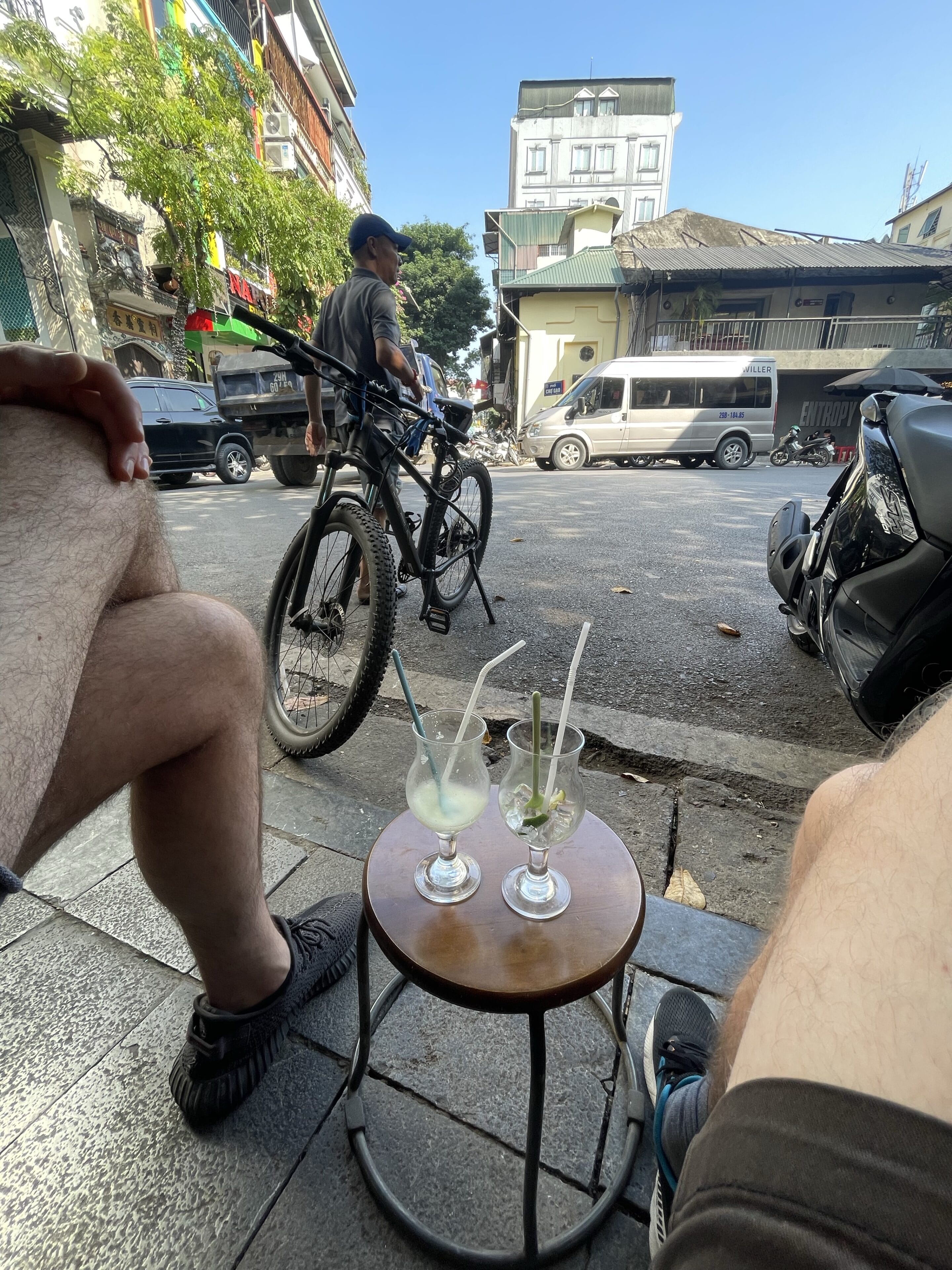
We then quickly headed home to rest. Malte dozed off on the sofa again, and Leon intended to lie down too but got distracted trying to figure out how to design the blog in different languages. We are often asked about this, and it has been a concern for him since the bike tour two years ago. Of course, everything turned out to be more time-consuming than expected. So, you can now forward the blog to your friends who prefer to read the articles in Vietnamese or English!
Eventually, Malte woke up, and we immediately set off to get dinner. Tonight, we were going for Phở rolls first, and because that was not enough, we also got Bánh Cuốn. Somewhere by the roadside, we found shops that suited us just fine… no risk, no fun!
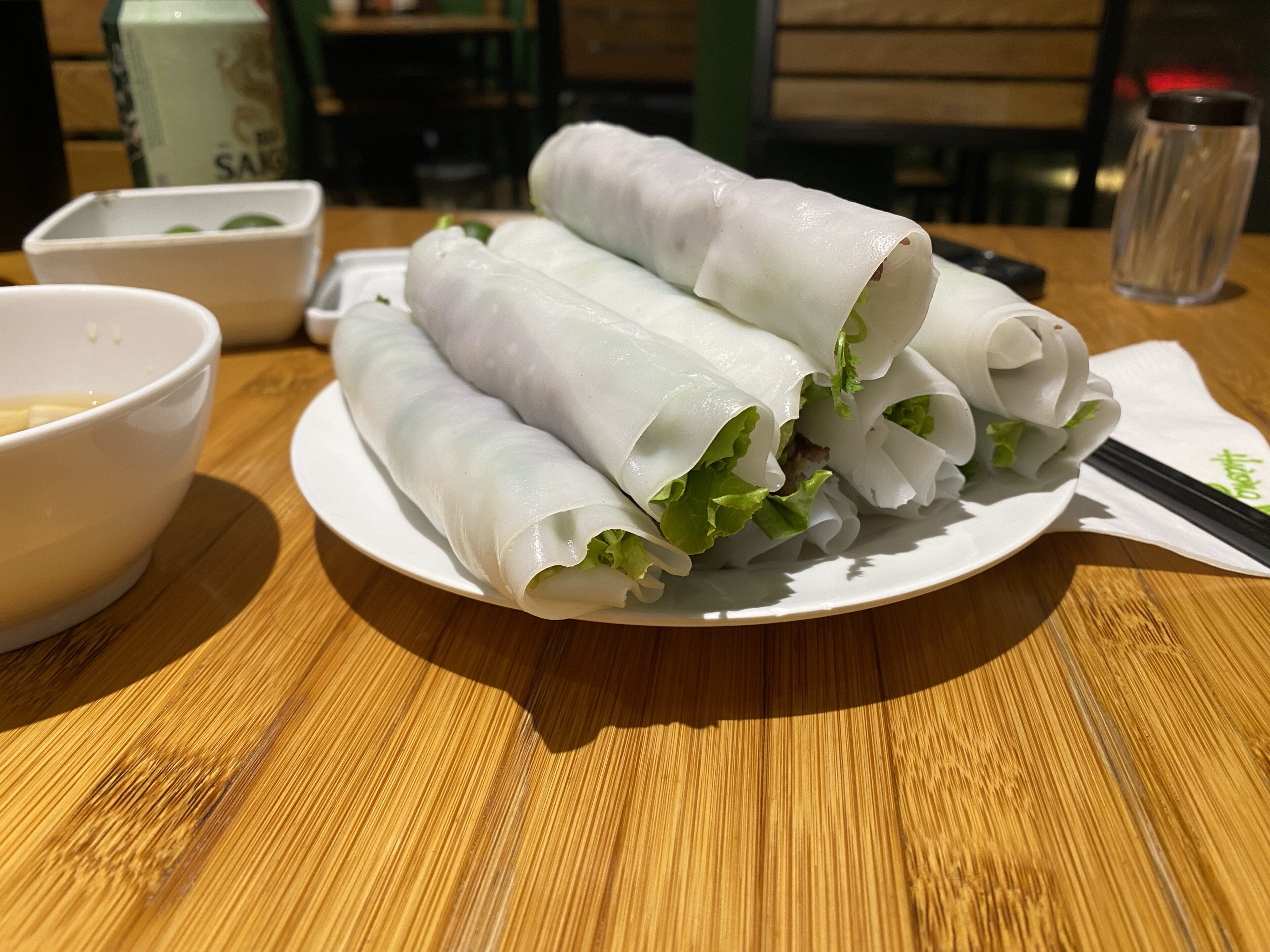
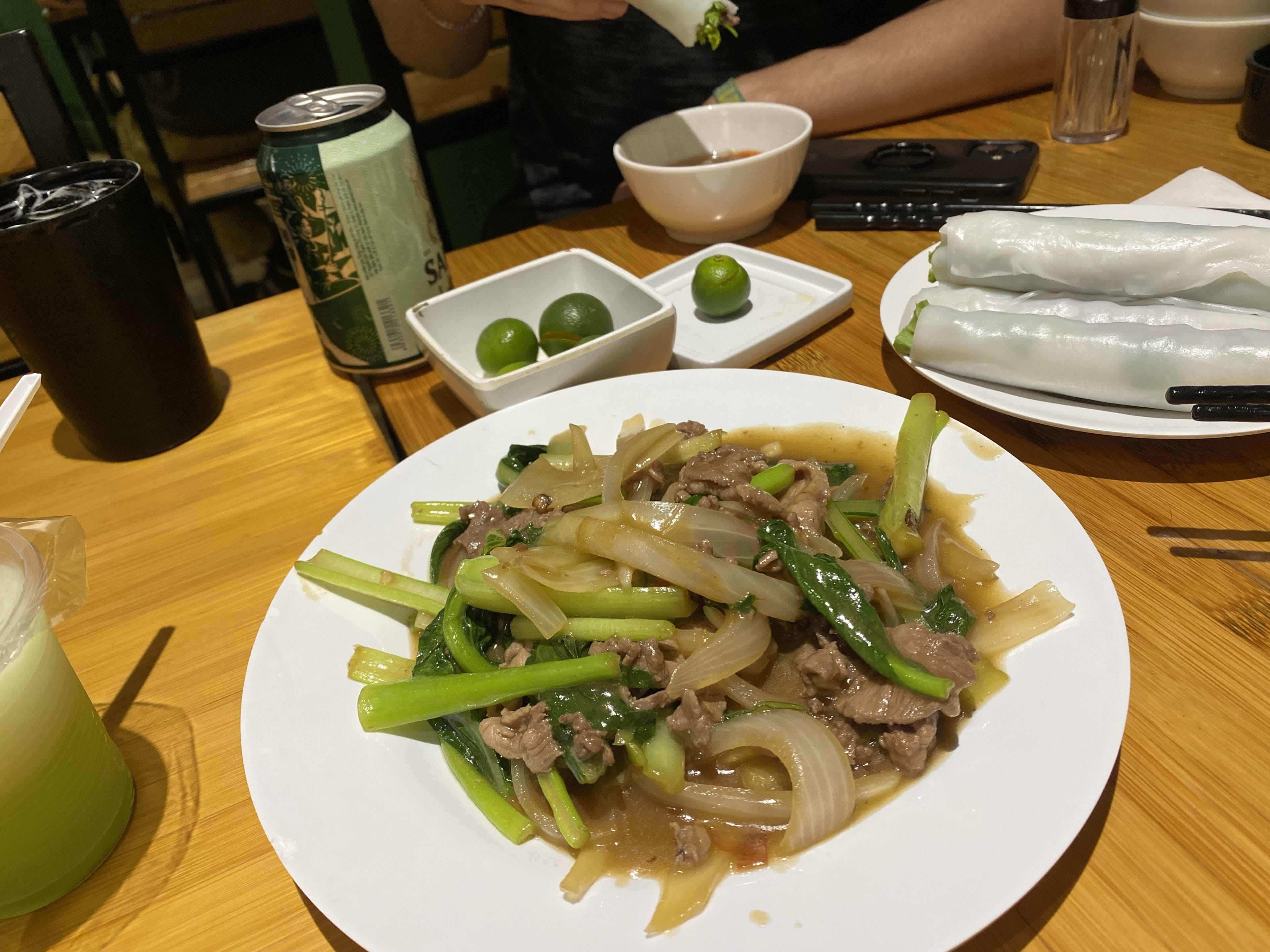


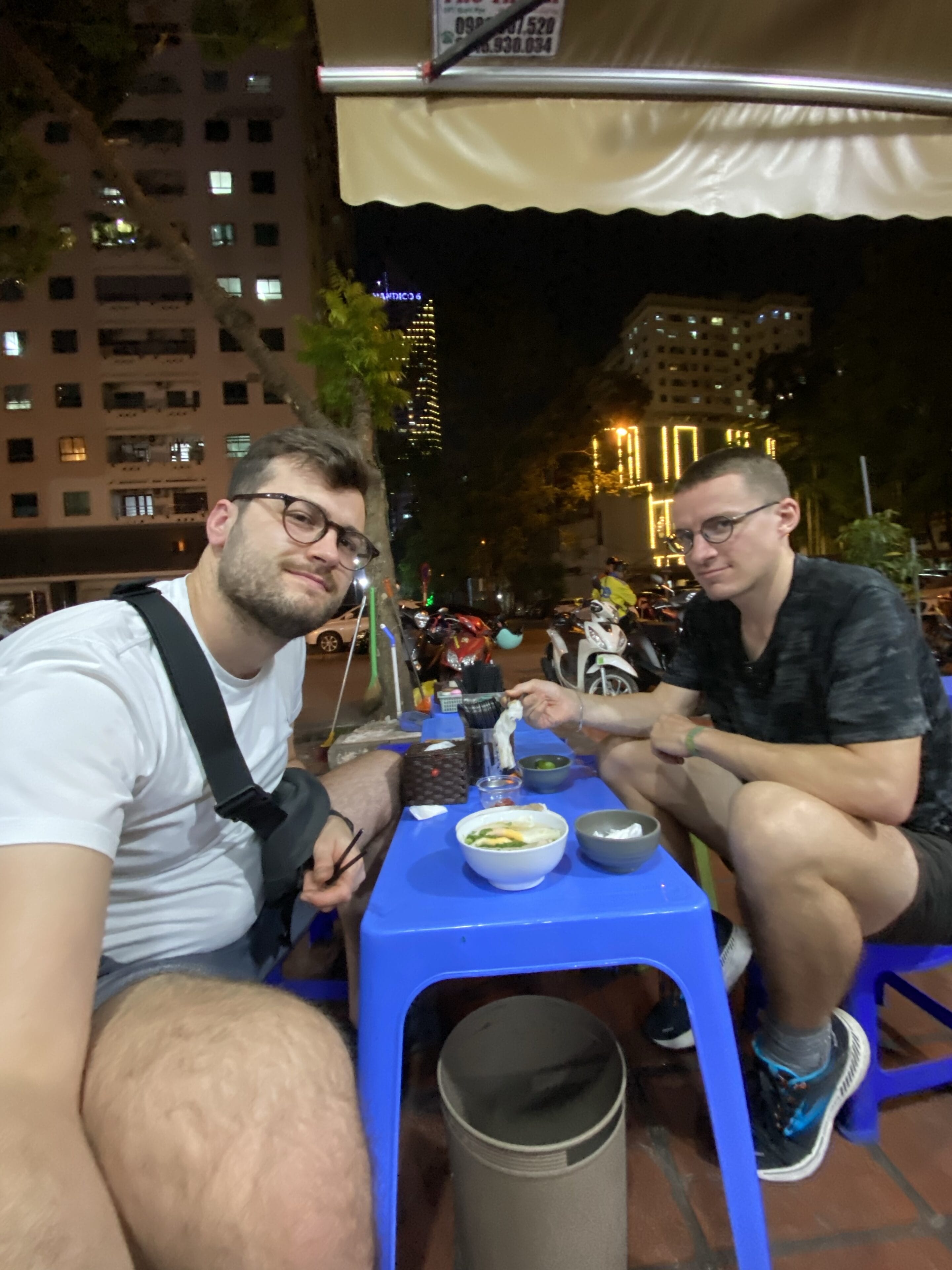
Of course, we couldn’t go back to the apartment without getting a juice from our favorite juice stand.

We relaxed on the sofa with our juice, ate a dragon fruit we had received from Chi Trang, played a bit of chess, and then went to bed pretty punctually – around half past one – as we could sleep in the next day. Thank goodness!





Leave a Reply